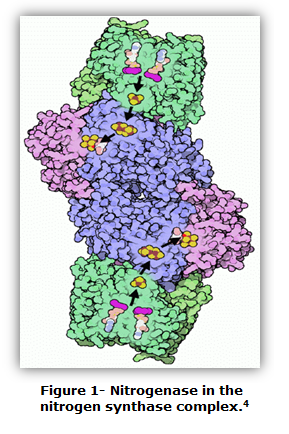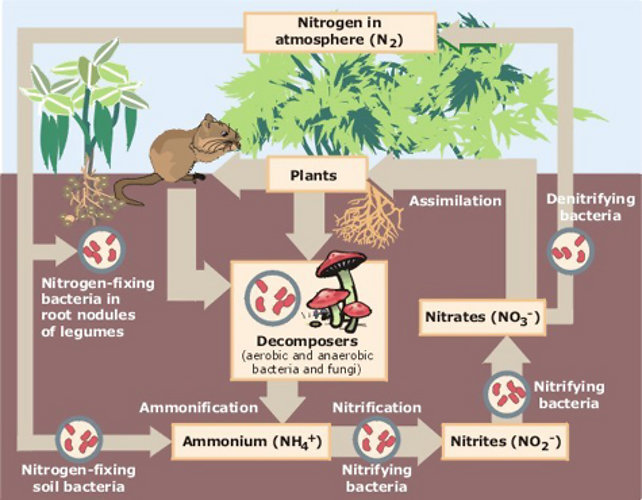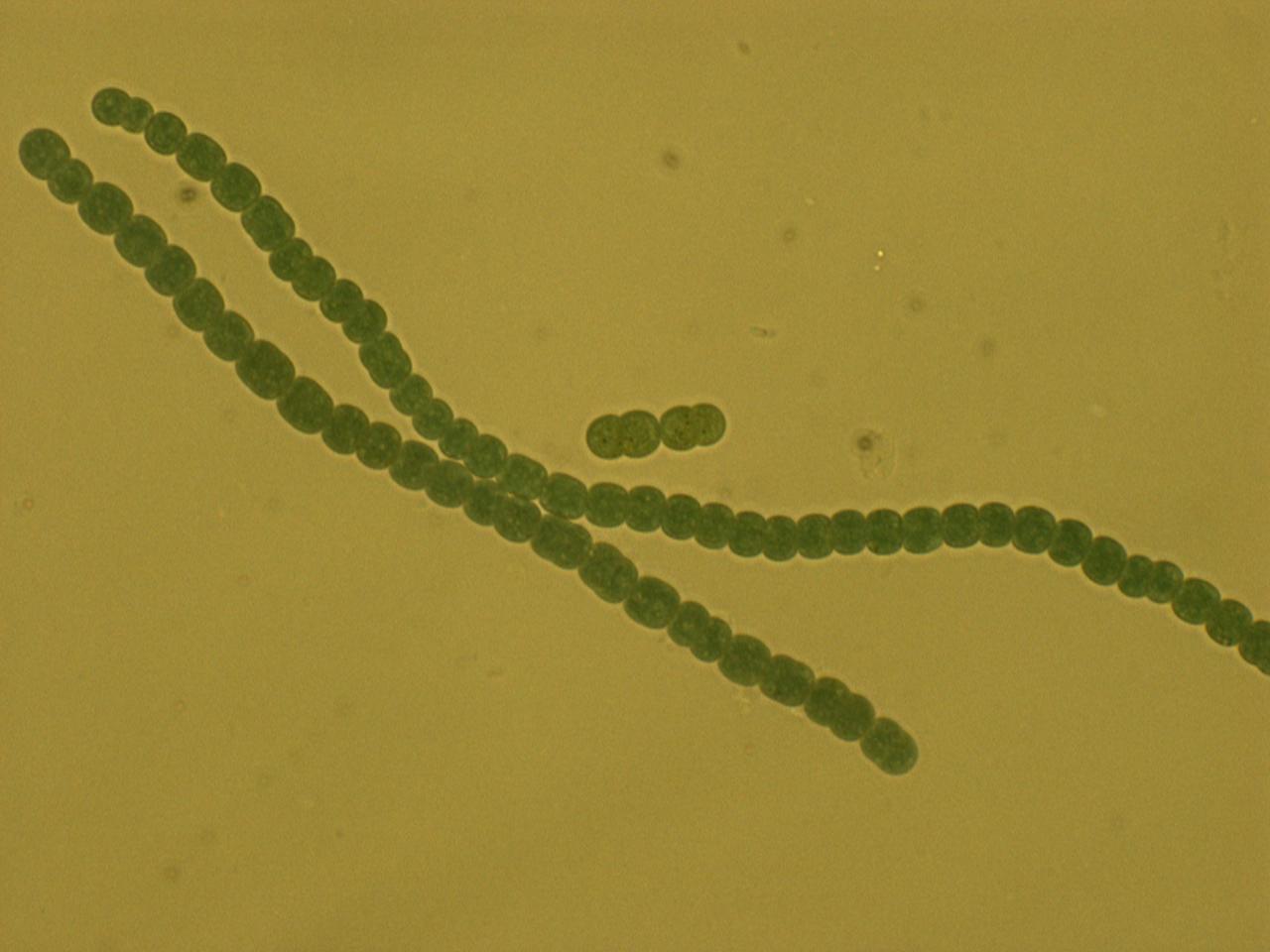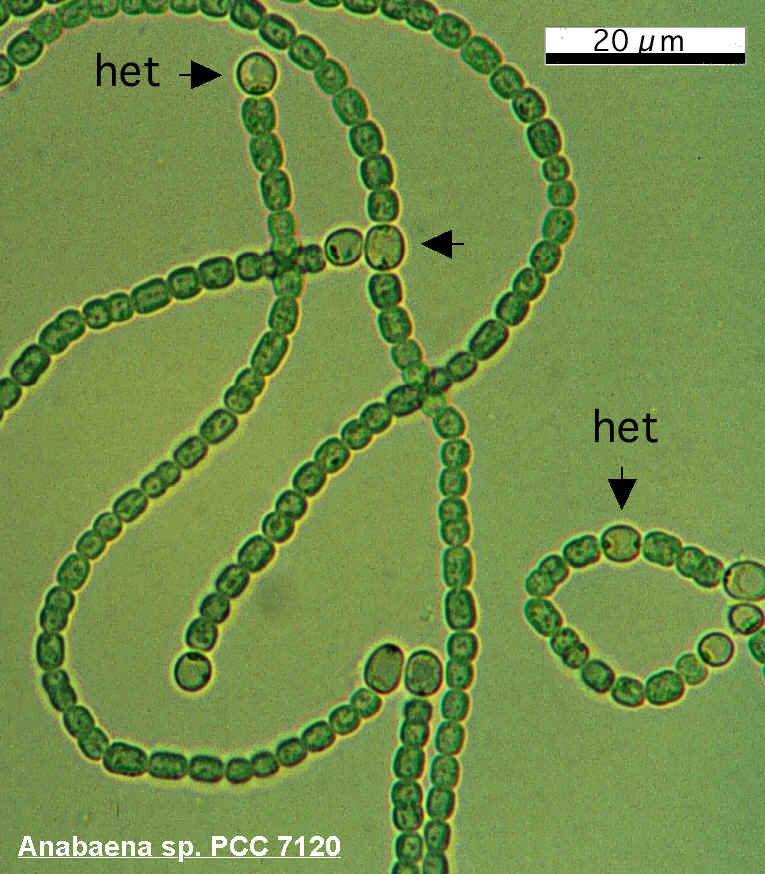Team:Brown-Stanford/PowerCell/Cyanobacteria
From 2011.igem.org
Ho.julius.a (Talk | contribs) (→Cyanobacteria) |
Ho.julius.a (Talk | contribs) (→Cyanobacteria) |
||
| Line 18: | Line 18: | ||
---- | ---- | ||
| + | ==='''Anabaena 7120'''=== | ||
For our host, we chose a [http://en.wikipedia.org/wiki/Diazotroph diazotropic] cyanobacterium, ''Anabaena'' 7120. ''Anabaena'' 7120 has several special characteristics that make it an advantageous host species; it is able to access nitrogen and carbon dioxide, and accept our DNA in some relatively easy manner. These will each be explained in greater detail in sections below. In addition, we wanted an organism that could survive on minimal media, produce all of its products in aerobic conditions, and live a happy, fulfilled life with as little auxiliary equipment as possible. | For our host, we chose a [http://en.wikipedia.org/wiki/Diazotroph diazotropic] cyanobacterium, ''Anabaena'' 7120. ''Anabaena'' 7120 has several special characteristics that make it an advantageous host species; it is able to access nitrogen and carbon dioxide, and accept our DNA in some relatively easy manner. These will each be explained in greater detail in sections below. In addition, we wanted an organism that could survive on minimal media, produce all of its products in aerobic conditions, and live a happy, fulfilled life with as little auxiliary equipment as possible. | ||
Revision as of 01:10, 29 September 2011
Cyanobacteria
The search for a suitable chassis on which to build the PowerCell project turned up several promising contenders: algae are very efficient solar powerhouses, and E. coli has been engineered to express rubisco and perform a rudimentary form of carbon sequestration, among others. After carefully weighing our options, we hit upon cyanobacteria, commonly (and slightly inaccurately) called blue-green algae.
Anabaena 7120
For our host, we chose a [http://en.wikipedia.org/wiki/Diazotroph diazotropic] cyanobacterium, Anabaena 7120. Anabaena 7120 has several special characteristics that make it an advantageous host species; it is able to access nitrogen and carbon dioxide, and accept our DNA in some relatively easy manner. These will each be explained in greater detail in sections below. In addition, we wanted an organism that could survive on minimal media, produce all of its products in aerobic conditions, and live a happy, fulfilled life with as little auxiliary equipment as possible.
Nitrogen and Oxygen
Anaebaena is a diazotroph, or “N2 eater.” The organism has evolved a nitrogenase which is capable of overcoming the triple covalent bond between the two nitrogen atoms, although the reaction is oxygen-sensitive and can only take place in an anaerobic environment.

For this reason, most diazotrophs separate the processes of photosynthesis and nitrogen fixation temporally – that is, they photosynthesize in the day and fix nitrogen at night. Anabaena 7120 has a different way around this problem. It forms long filaments of cells containing two different cell types, normal (vegetative) cells, and heterocysts.
Heterocysts are specialized cells, visibly larger and darker than the rest, and form thick cell walls which house an anaerobic intracellular microenvironment where the nitrogenase can perform nitrogen fixation. The nitrogen-containing products are exported to adjacent vegetative cells via plasmodesmata, through which photosynthesized carbon products return. Normal (vegetative) cells carry on with photosynthesis. The two cell types then share nutrients up and down the filament, thus providing each cell with all the nutrients it needs.
Anabaena can live in aerobic conditions, fix nitrogen and photosynthesize sugars. They are able to produce almost everything they need, making them capable of living on very minimal media—clear water with a few trace minerals. It follows that we can harness their self-sufficiency to provide for more dependent organisms, such as E. coli. All we have to do is enforce some compulsory generosity, and although Anabaena won’t be as well-fed as it was as a selfish microbe, the E. coli it is supporting will have a food source where it otherwise would have gone hungry.
Transformation of Cyanobacteria
There are cyanobacteria which will accept DNA without complaint. Many model cyanobacterium species, such as Synechococcus elongatus or Synechocystis PCC6803, for example, will simply take up naked DNA in solution and express it. Anabaena must take its DNA through a rather circuitous path; the DNA construct must first be placed in a cargo plasmid and transformed into E. coli by traditional means. Transfer to Anabaena takes place by conjugation, facilitated by a second E. coli strain carrying a plasmid encoding the machinery for bacterial conjugation.
Another problem is the propensity of Anabaena to slice and dice foreign DNA with isoschizomers of the restriction enzymes AvaI, AvaII and AvaIII. This has been addressed with methyltransferases targeting the same sequences; that means a third E. coli strain carrying these methyltransferases (a helper plasmid) participates in the conjugation. At the end of all this, a certain number of cyanobacterial cells take up the DNA, and are selected for with neomycin on minimal media. As soon as the unsuccessful exconjugates and the bacterial parental strains die off, transformant colonies can be picked. One significant hindrance associated with this process is the slow cyanobacterial doubling time; the transformants can take upwards of a week to grow.
References
1 http://chemwiki.ucdavis.edu/Wikitexts/UC_Davis/UCD_Chem_124A:_Berben/Nitrogenase/Nitrogenase_2
 "
"











